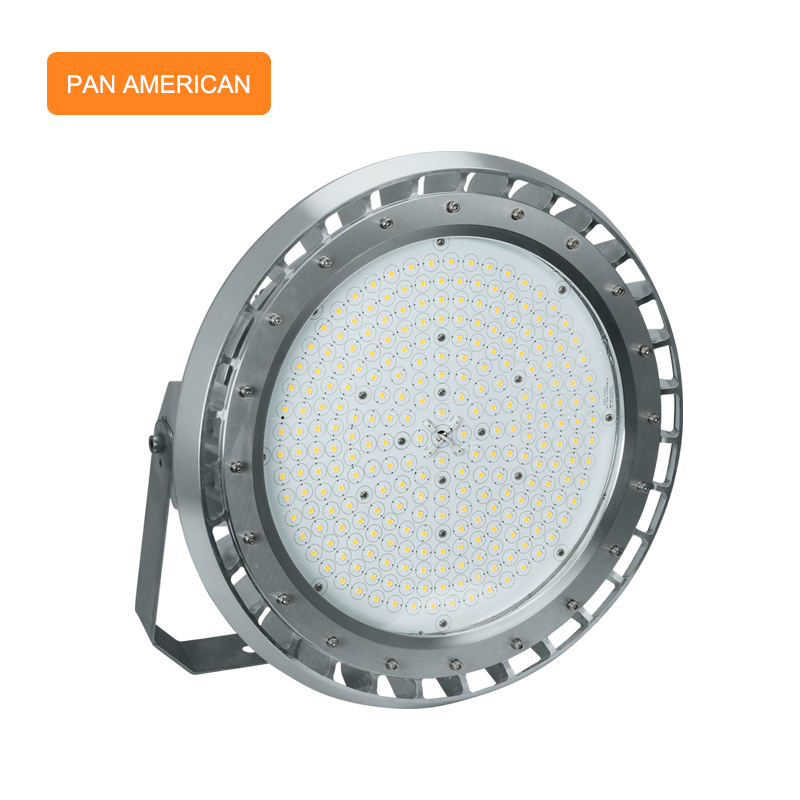Welcome~panamericanelectronics.Com Enterprise website
Writer:Jane Time:2021-06-24 Browse:173

Heat dissipation is one of the main factors affecting the illumination intensity of LED lamps. LED lamps are 80 percent more energy efficient than traditional incandescent bulbs, but their LED components and driver circuits dissipate a lot of heat. If this heat is not properly vented, the luminosity and life of LED lighting fixtures will decrease dramatically. To solve the problem of LED heat dissipation technology in the last article "LED heat dissipation technology" to do the elaboration, in the use of active cooling technology to solve the heat released by LED lamp components, but also in the heat dissipation materials.
Here's a look at the numbers:
Thermal conductivity coefficient (unit: W/mK)
Silver 429
Copper 401
Gold 317
Aluminum 237
Iron 80
Lead 34.8
1070 aluminum alloy 226
Type 1050 aluminum alloy 209
6063 aluminum alloy 201
6061 aluminum alloy 155
Generally speaking, ordinary air-cooled radiators naturally choose metal as the material of the radiator. The selected material is expected to have both high specific heat and high thermal conductivity. It can be seen from the above that silver and copper are the best thermal conductivity materials, followed by gold and aluminum. But gold and silver are too expensive, so at present, the heat sink is mainly made of aluminum and copper. In comparison, copper and aluminum alloy both at the same time each has its advantages and disadvantages: copper thermal conductivity is good, but the price is more expensive, higher processing difficulty, weight is too large, and copper radiator heat capacity is small, and easy to oxidation. On the other hand, pure aluminum is too soft to be used directly. The aluminum alloy used can provide enough hardness. The advantage of aluminum alloy is low price and light weight, but the thermal conductivity is much worse than copper. So in the history of the radiator also appeared the following materials of the product:
Pure aluminium radiator
Pure aluminum radiator is the most common early radiator, its manufacturing process is simple, low cost, so far, pure aluminum radiator still occupy a considerable part of the market. In order to increase the heat dissipation area of its fins, the most commonly used processing means of pure aluminum radiator is aluminum extrusion technology, and the main index to evaluate a pure aluminum radiator is the thickness of the radiator base and the pin-fin ratio. PIN refers to the height of the fins of the radiator, and FIN refers to the distance between two adjacent fins. The Pin-FIN ratio is divided by the height of the PIN (excluding the base thickness) by FIN. The larger the Pin-FIN ratio is, the larger the effective heat dissipation area of the radiator is, and the more advanced the aluminum extrusion technology is.
Pure copper radiator
Copper has 1.69 times the heat conductivity of aluminum, so all else being equal, a pure copper radiator can take heat away from the heat source more quickly. The quality of a material of copper nevertheless is a problem, a lot of flaunt "pure copper radiator" be not true 100% copper actually. In the list of copper, copper with more than 99% copper is called acid-free copper, the next level of copper is red copper with less than 85% copper. At present on the market most of the pure copper radiator copper content is between the two. And of a few inferior pure copper radiator contain copper quantity to be less than 85% even, although cost is very low, but its heat conduction ability is reduced greatly, affected come loose heat sex. In addition, copper also has obvious disadvantages, high cost, difficult processing, radiator quality is too much to hinder the application of all copper heat sink. The hardness of copper is not as good as that of aluminum alloy AL6063, and the performance of some mechanical processing (such as grooving) is not as good as that of aluminum. The melting point of copper is much higher than that of aluminum, which is not conducive to Extrusion.
Copper-aluminum bonding technology
After considering the shortcomings of copper and aluminum, some of the high-end radiators in the market are often made of copper and aluminum. These radiators are usually made of copper metal base, while the radiator fins are made of aluminum alloy. Of course, in addition to the copper bottom, there are radiators using copper column and other methods, and the same principle is also used. With high thermal conductivity, copper bottom surface can quickly absorb the heat released by CPU; A balance has been found between aluminum fins, which can be shaped in a way that is most conducive to heat dissipation by means of a complex process, and large space for heat storage and rapid release.
To improve the LED luminous efficiency and service life of LED products heat dissipation problem is one of the most important subject at this stage, the development of LED industry also is the high power, high brightness, small size LED products as its development focus, therefore, provide has its high heat dissipation, size precision of cooling base board, also become the development trend of the future in LED heat dissipation substrate. At present, it is the mainstream of development to replace aluminum nitride substrate with alumina substrate, or replace the grain/substrate combination of gold casting wire with eutectic or cladding process to improve the luminous efficiency of LED. In this development trend, the line alignment accuracy of the heat dissipation substrate itself is extremely strict, and it needs to have the characteristics of high heat dissipation, small size, good adhesion of metal circuit, etc. Therefore, the production of thin film ceramic heat dissipation substrate using yellow light micro shadow will become one of the important catalysts to promote LED to high power continuously.
Tel: +86 0769 38930008
Phone:+86 13267401690
Mail:Vipmanager@panamericanelectronics.com
Add: Building 6, Zhongtang Tian'an Digital City, No. 88, Jinyuan Road, Zhongtang Town, Dongguan City, Guangdong Province,China